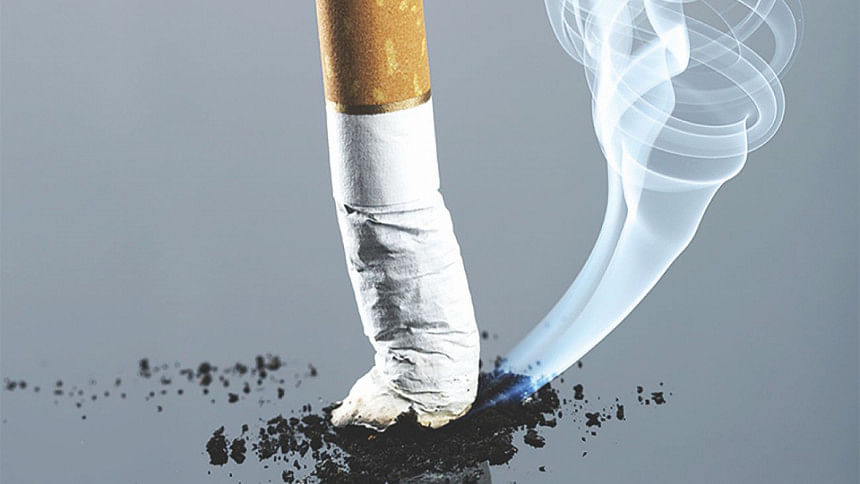Cigarette top killer

Tobacco is the single most important risk factor for cancer. Bangladesh is one of the largest tobacco consuming countries in the world; each year tobacco-related diseases kill over 100,000 people in Bangladesh, and among this about 38 percent deaths occur from tobacco related cancer mortality, a recent research has shown.
According to the Global Adult Tobacco Survey (GATS) in 2017, more than 37.8 million adults, both men and women, are consuming smoke or smokeless tobacco products. About 19.2 adults smoked tobacco, in which about 15.0 million adults smoked cigarettes and about 5.3 million adults smoked bidis.
“The link between smoking and cancer is very clear. Tobacco smoke contains approximately 4000 chemicals, a significant number of them are toxic and can damage cells and many of them are carcinogenic, which is a big reason of cancer”, said Dr Md Abdullah Al Noman of Radiation Oncology department, National Institute of Cancer Research and Hospital (NICRH).
Dr Md Habibullah Talukder, Associate Professor of NICRH, when discussing the dangerous impacts of smoking stated that it can cause many types of cancers, such as, lung cancer, oral cancer, liver cancer, stomach cancer, colorectal cancer, bladder cancer, pharynx (upper throat) cancer, nose and sinuses cancer, larynx (voice box) cancer, esophagus (food pipe) cancer, pancreatic cancer, kidney cancer, bowel cancer, colon cancer, rectum cancer and some types of leukemia.
For women, smoking can also cause cervical cancer, breast cancer and cancer on ovary, he added.
Dr Noman also said that smoking makes radiation therapy and chemotherapy less effective and can make treatment-related side effects worse.
If a smoker needs any surgery, the wounds from surgery cannot heal quickly and increases the risk of complications, because smoking decreases the amount of oxygen that tissues receive, he added.
As per Cancer Research UK, DNA is changed for every 15 cigarettes smoked, which could cause a cancerous cell in the body.
Smokeless tobacco use is common among both women and men. Overall, 22.0 million adults used smokeless tobacco; among them 20 million used betel quid with tobacco and 3.9 million used gul (oral tobacco powder), GATS research has also shown.
Tobacco that is not burned includes chewing tobacco, oral tobacco, spitting tobacco, dip, chew, dissolvable tobacco and snuff.
According to National Cancer Institute (NCI) of United States, smokeless tobacco also can cause different types of cancer, including oral (mouth, tongue, cheek and gum), esophageal and pancreatic cancers.
GATS has further reported that more people were exposed to second-hand smoke (SHS) at home and outside. It showed that about 40.8 million people at home, 8.1 million people at workplace and 25 million at public transport were exposed to SHS.
When someone smokes a cigarette, large amounts of its smoke goes into the air. When people nearby breathe this in, they are exposed to second-hand smoke (SHS).
As per American Cancer Society (ACS), SHS is more toxic and has higher concentration of cancer-causing agents.
Youth tobacco consumption is a concern in Bangladesh, as nearly 7 percent of the 13-15 age group consume tobacco products, a study revealed.
Dr Golam Mohiuddin Faruq, Joint Secretary of Bangladesh Cancer Society (BCS) said that it is a matter of great regret that the cultivation of tobacco is still rampant.
Progga, a nonprofit organization, revealed that the Smoking and Tobacco Products Usage (Control) Act, 2005, was a good law for controlling tobacco production and use, but it should be better implemented.
Eating fibreless food, especially red meat, obesity, physical inactivity and taking alcohol are also major risk factors of cancer, said Dr Talukder.

 For all latest news, follow The Daily Star's Google News channel.
For all latest news, follow The Daily Star's Google News channel. 



Comments